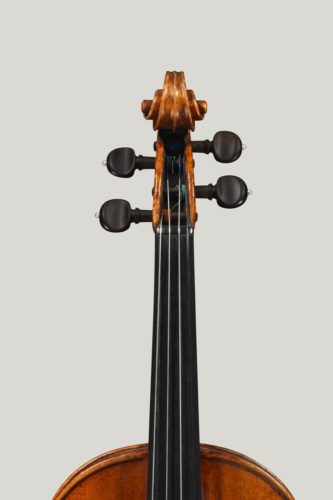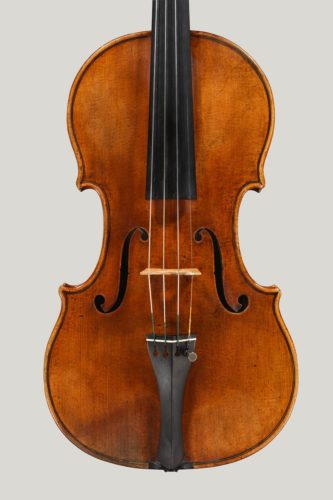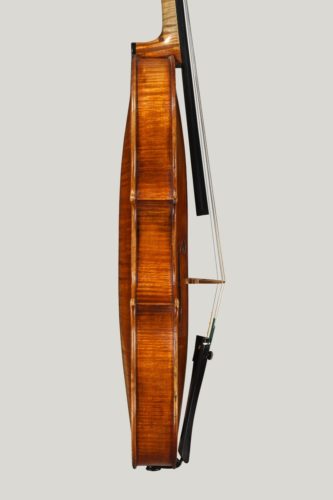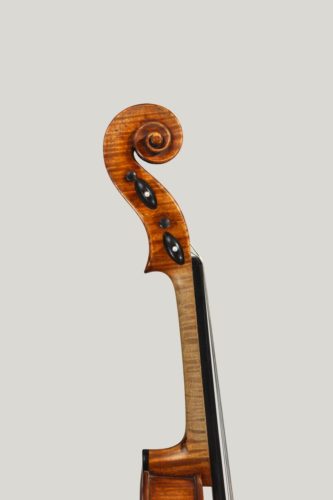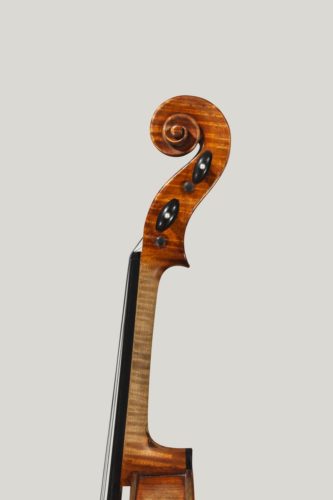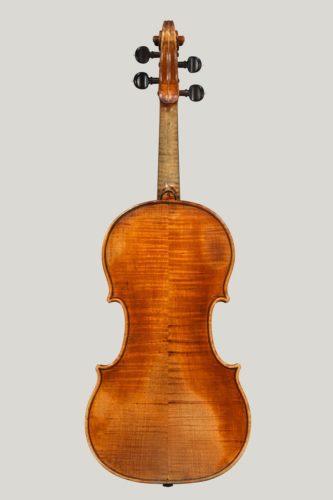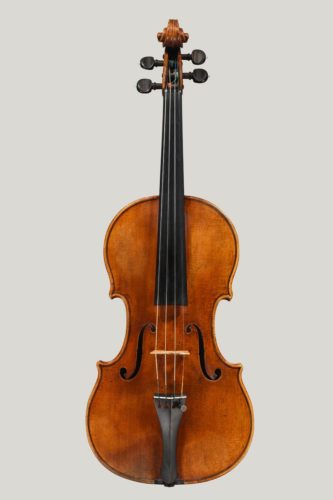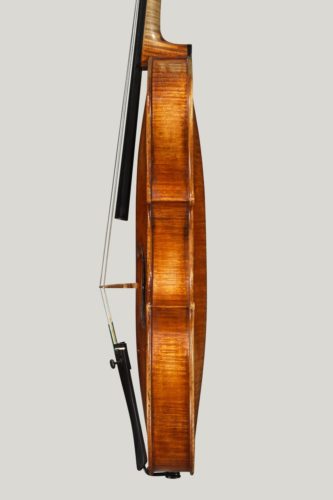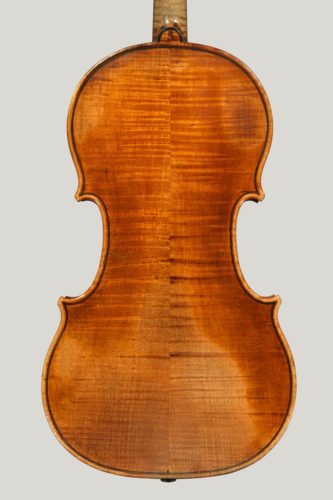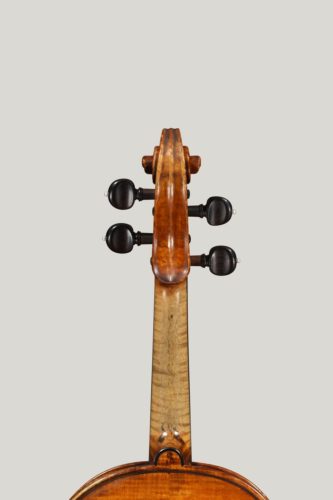Antonio Stradivari
Violin made by Antonio Stradivari in 1689 in Cremona, also called “Arditti”. Elise Båtnes plays on this instrument.
Antonio Stradivari was without question the great genius of violin making. The master of craftsmanship and tonal engineering, he transformed the instrument in the early 18th century and provided the template for virtually all subsequent concert violins.
His first known instrument appeared in 1666, and his violins remained stylistically tentative until 1680. Thereafter his instruments developed a more confident and consistent appearance, marked out by the consummate workmanship that was his hallmark throughout his long career. The instruments made between 1680 and 1690 are known as “Amatise”, referring to the strong influence of Nicolò Amati (1596-1684) in their design. This period was one of rapid development, resulting in the “Golden Period” between 1700 and 1720, when Stradivari’s artistic and tonal development reached full maturity.
The “Arditti” of 1689 is a fine example from the “Amatise” phase. Many of the moulds and templates Stradivari used to make his instruments are still preserved in the Museo Stradivariano in Cremona, and the “Arditti”appears closely matched to two of them, marked ‘S’ and ‘MB’ by the master himself. Stradivari made few changes to the Amati pattern; his corners are a little broader, and the upper pair have a distinctive downward fall. The purfling is a little thinner than that of Amati, but the full arching with a clearly defined recurve at the edges is obviously modelled on Nicolò’s work. More dramatic developments are seen in the soundholes and scroll. The ‘f’s are broad and slightly straighter, with wide, strongly fluted wings which define Stradivari’s style. The scroll is a little heavier and more substantial than Amati’s, but carved with incomparable grace and elegance.
The materials used are typical of the period – not as spectacular in quality as some later works, but flawless and perfectly matched. The two-piece back has a fine figure running horizontally across it, and the ribs and scroll appear to be from the same maple log. The “Arditti” is one of the few Stradivaris to have survived with its original neck; most have been worn out and replaced. Even more significant are the initials ‘AS’ engraved on the back button, an extremely rare original feature which is specifically noted in the 1902 Hill book on the life of Stradivari.
The front is made from the particularly fine-grained spruce that appears on many of Stradivari?s instruments in this period. The whole instrument bears a covering of rich amber-coloured varnish laid over a reflective golden-hued ground, again typical of the “Amatise” work.
The history of this violin is recorded from 1846, when it was owned by a Signor Carli of Milan, who presented it to the Italian violinist Luigi Arditti after whom it is now named. Arditti made a successful career in London, and in 1895 sold the instrument to the London dealers W.E. Hill & Sons. Hills subsequently arranged its sale several times, firstly to an English violinist named Miss Gidley, then to Ernest Craig, M.P., and again to the distinguished collector Richard Bennett. In 1947 it was secured by another well-known British collector, Gerald Segelman, who retained it until his death in 1992. It then passed to the American collector Howard Gottlieb of Chicago, but was brought to the Dextra Musica collection by Peter Biddulph in 2007. The succession of eminent collectors who have owned and treasured this fine instrument is testament to its beauty, originality and superb condition.
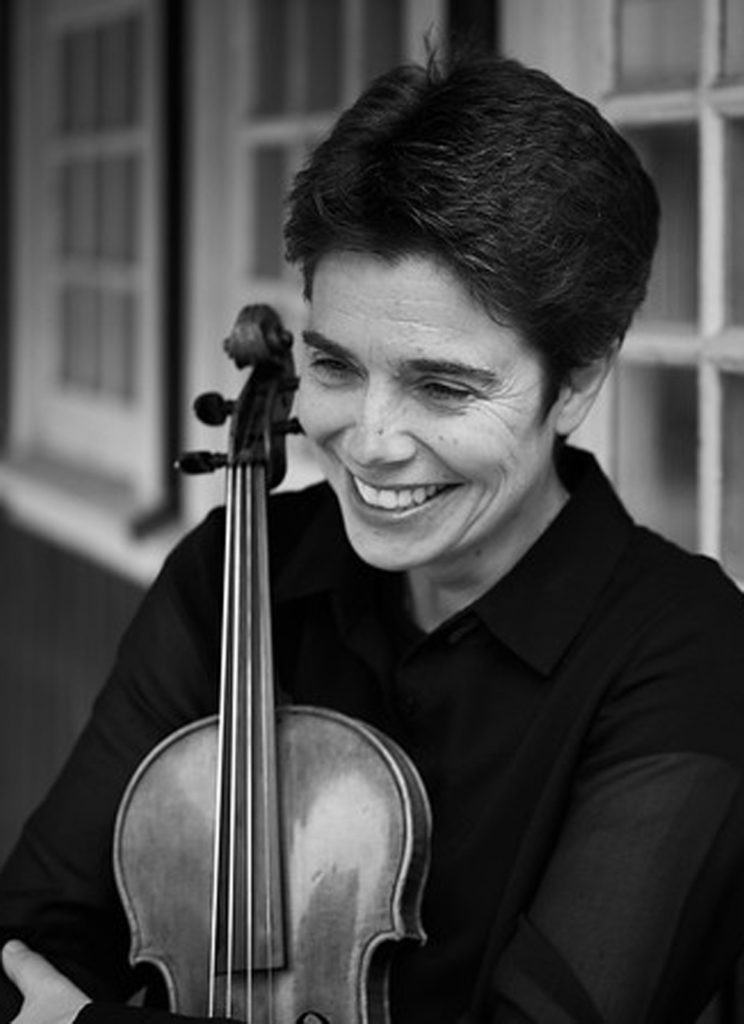
Elise Båtnes
Elise Båtnes has the position of First Concert Master in the Oslo Philharmonic Orchestra. Her concert activity includes solo performances under recognised conductors and orchestras abroad. Previously, she held the position of Concert Master in Denmark’s Radio Symphony Orchestra, as well as the Westdeutsche Rundfunk Sinfornieorchester. (Photo by: Ettore Causa)
